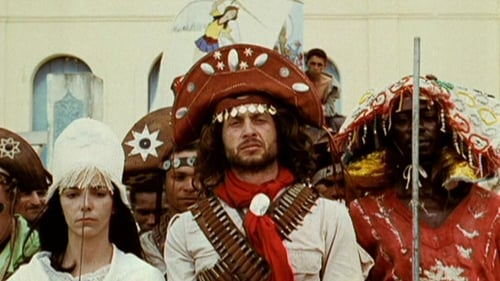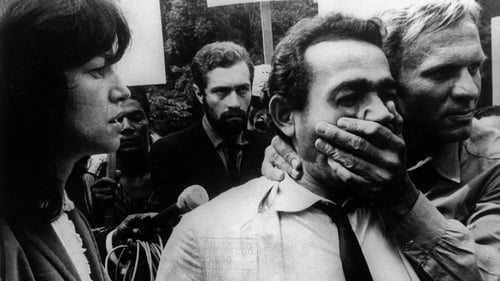
Director

Director

Writer
The painter Tino, in professional and political crisis, receives a telegram from his mother-in-law, Selma, announcing her return from Europe. After his wife's death, Tino continues living with Selma, with whom he had ambiguous relations, which he now wants to sever. Weak at this impossible love, he asks the maid Enedina to lock him in his room. There, he revives memories through letters, notes and photographs. Selma's son João is waiting for her at the airport and dreams of loving fulfillment in his own mother's arms.

Director
The painter Tino, in professional and political crisis, receives a telegram from his mother-in-law, Selma, announcing her return from Europe. After his wife's death, Tino continues living with Selma, with whom he had ambiguous relations, which he now wants to sever. Weak at this impossible love, he asks the maid Enedina to lock him in his room. There, he revives memories through letters, notes and photographs. Selma's son João is waiting for her at the airport and dreams of loving fulfillment in his own mother's arms.

Director

Screenplay
Life on the Jaramataia farm in the interior of Paraíba and the relations between the cowboys and the owners of the land.

Director
Life on the Jaramataia farm in the interior of Paraíba and the relations between the cowboys and the owners of the land.

Writer

Director

Writer

Director

Writer
A vision of the different forms of handicraft production in the interior of Paraíba.

Director
A vision of the different forms of handicraft production in the interior of Paraíba.

Director

Director

Director
In the interior of Paraíba a tournament between cowboys who must demonstrate mastery in knocking an ox down by the tail while they ride.

Set Decoration
A new incarnation of Cangaceiro bandits, led by Coirana, has risen in the badlands. A blind landowner hires Antônio to wipe out his old nemesis. Yet after besting Coirana and accompanying the dying man to his mountain hideout, Antônio is moved by the plight of the Cangaceiro’s followers. The troubled hitman turns revolutionary, his gun and machete aimed towards his former masters.

Director
In the late 1960s, Thomas Farkas imported equipment suitable for direct sound, and released a collection of documentaries called "Brasil Verdade" ("True Brazil"), after the Military Coup d'État took place in Brazil, which happened without any popular resistance or revolution or reaction of the society. The five short films are directly related to this fact and its consequences to the country.

Screenplay
In the village of Leva-e-Traz, the discovery of a oil field is responsible for a mass evasion of the townspeople. Left are the old and incapable for the extraction job. When the local priest announces he, too, is leaving the town, Satan emerge thrilled with the chance of overtaking the place.

Director
In the village of Leva-e-Traz, the discovery of a oil field is responsible for a mass evasion of the townspeople. Left are the old and incapable for the extraction job. When the local priest announces he, too, is leaving the town, Satan emerge thrilled with the chance of overtaking the place.

Costume Design
남아메리카의 상상 국가 엘도라도, 임종 직전의 파울루는 자신의 삶을 돌아본다. 정치 영화의 걸작으로 꼽히는 이 작품에서 감독은 인민주의적 좌파와 파시스트적 우파가 모두 실패한 과정을 꼼꼼히 파헤친다. 전형적인 이야기 구조를 거부하며 새로운 방식의 플롯을 선보이는 은 라틴 아메리카의 엄혹한 “정치적 경험의 느낌”(로버트 스탬)을 표현한다.

Art Direction
남아메리카의 상상 국가 엘도라도, 임종 직전의 파울루는 자신의 삶을 돌아본다. 정치 영화의 걸작으로 꼽히는 이 작품에서 감독은 인민주의적 좌파와 파시스트적 우파가 모두 실패한 과정을 꼼꼼히 파헤친다. 전형적인 이야기 구조를 거부하며 새로운 방식의 플롯을 선보이는 은 라틴 아메리카의 엄혹한 “정치적 경험의 느낌”(로버트 스탬)을 표현한다.

Narrador
On the dry ground of the caatinga and on the rocky slopes of the sertão, the goat survives. Organic parts of the country landscape, linked to the economy of certain regions, provide milk, meat and skin for export.

Narrator
The origins of "cangaço", armed brigands in the Northeast between 1935 and 1939, interviews with some survivors of the fighting, police and outlaws movement. Interspersed with testimonials, authentic sequences of films made in 1936 by Benjamin Abraham, an Arab peddler who managed to film the famous band of Virgulino Ferreira da Silva, the "Lampião".

Director
The origins of "cangaço", armed brigands in the Northeast between 1935 and 1939, interviews with some survivors of the fighting, police and outlaws movement. Interspersed with testimonials, authentic sequences of films made in 1936 by Benjamin Abraham, an Arab peddler who managed to film the famous band of Virgulino Ferreira da Silva, the "Lampião".

Costume Design
Wanted for killing his boss, Manuel flees with his wife Rosa to the sertão, the barren landscape of Northern Brazil. Thrust into a primordial violent region, Manuel and Rosa come under the influence and control of a series of frightening figures.

Art Direction
Wanted for killing his boss, Manuel flees with his wife Rosa to the sertão, the barren landscape of Northern Brazil. Thrust into a primordial violent region, Manuel and Rosa come under the influence and control of a series of frightening figures.

Writer
Wanted for killing his boss, Manuel flees with his wife Rosa to the sertão, the barren landscape of Northern Brazil. Thrust into a primordial violent region, Manuel and Rosa come under the influence and control of a series of frightening figures.

Writer
The life of a runaway slave who founded the Quilombo dos Palmares, an outlaw community of Brazilian slaves.
















